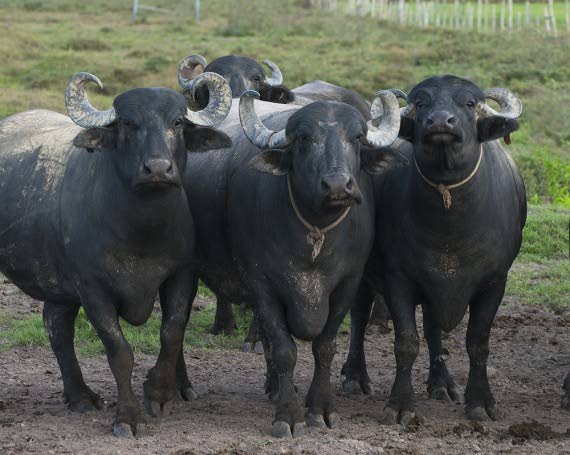Buffalypso, high price for taxpayers

Minister of Agriculture, Land and Fisheries Clarence Rambharat says the buffalypso has been a financial burden on the country’s taxpayers for decades.
Addressing the launch of a two-day conference, aimed at revitalising its dwindling herd at the St Augustine campus of the University of the West Indies on Friday, Rambharat gave a practical perspective of the challenges confronting his ministry with respect to its preservation.
His comments appeared to take many of the academics in the Frank Stockdale Building by surprise.
Rambharat alluded to the decision taken 15 years ago to place the herd under the management of the Ministry of Agriculture after the closure of Caroni 1975 Ltd.
He said the ministry was not financially equipped to accommodate the move.
“Some of the academics have that luxury of researching, producing, publishing (material on the buffalypso) but not necessarily informing on the most prudent economic decision to be made and in the transition from Caroni Ltd to life without Caroni Ltd, the decision was made to place the herd under the management of the Ministry of Agriculture,” he said. “The fact is that the Ministry of Agriculture did not, then, and does not now have that capacity. But the decision was taken and since then, maybe 2003, 2004, for 14 to 15 years, we have just carried on doing it exactly as it was done in Caroni 1975 Ltd.”
Rambharat claimed the actual production cost, per kilogramme, of buffalypso in this country, was still unknown.
“I could tell you whatever is the cost, the taxpayer has been carrying it for several decades.”
The brainchild of late veterinarian Steve Bennett (who had worked with Caroni Ltd), the buffalypso was created through selective breeding more than five decades ago, to develop TTs agricultural economy, particularly in sugar cane cultivation.
However, less than a decade ago, Bennett is said to have wept at what had become of the 3,600 herd of well-nourished buffalo cows, calves and bulls at Mora Valley Farm.
An 11-member committee, comprising academics, has been established to promote the revitalisation of the buffalypso.
However, Rambharat observed there were no representatives from the State’s financial sector on the committee.
He also wondered why the private sector has not stepped in to assist in rehabilitating the herd.
“You can point to no private sector organisation, farm, entity, farmer, who has been carrying the cost of buffalypso except the taxpayer.” He asked: “Of this rich Steve Bennett legacy, of this unique thing we have produced called the buffalypso, of this thing that so many people rate as one of the finest things we have, why isn’t the private sector rushing to invest in it?
“Why is there no farm of significant size, with all the acreage that is available to us and all the mega farms and large farms the government has made available, why isn’t buffalypso thriving in the hands of the private sector investor? Why have we had to ask the taxpayer to carry weight of these herds?”


Comments
"Buffalypso, high price for taxpayers"